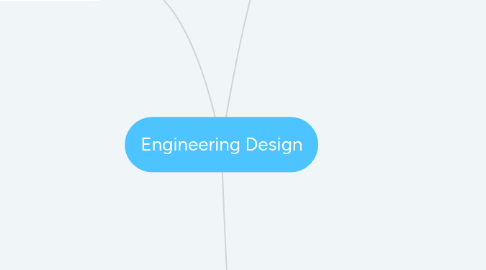
1. Defining and Delimiting an Engineering Problem
1.1. Identify Problem
1.1.1. Identify Goals
1.1.2. Create a Clear Criteria
1.1.2.1. What needs have to be met
1.1.2.2. Function
1.1.2.3. Cost
1.1.2.4. durability
1.1.2.5. Should be quantifiable
1.1.3. Hypothesize Possible Solutions
1.1.4. What are the limitations
1.1.4.1. Constraints
1.1.4.1.1. Physical
1.1.4.1.2. Economical
1.1.4.1.3. Political
1.1.4.1.4. Legal
1.1.4.1.5. Social
1.1.4.1.6. Ethical
1.1.4.1.7. Aesthetic
1.1.4.1.8. Quantitative Measurements of Constraint
2. Developing Possible Solutions
2.1. Creative Process
2.1.1. Brainstorm
2.1.2. Draft
2.1.3. Hypothesize
2.2. Display of Ideas
2.2.1. Models
2.2.1.1. All Engineers use Models
2.2.1.2. Help Engineers Visualize Elements of Possible Solution
2.2.1.3. Helps Engineers Understand Features of a Design Problem
2.2.1.4. Help Predict a Designs Performance
2.2.1.5. Can be Manipulated
2.2.1.6. Scale Models
2.2.1.7. Prototypes
2.2.2. Sketches
2.2.3. Diagrams
2.2.4. Important elements of knowledge to convey clear ideas
2.2.4.1. Ability to Use
2.2.4.1.1. Mathematical models
2.2.4.1.2. Physical Models
2.2.4.1.3. Graphical Models
2.2.4.2. Systems of Engineering
2.2.4.2.1. Mechanical
2.2.4.2.2. Electrical
2.2.4.2.3. Biotechological
3. Optimizing the Design Solution
3.1. Finding the Best Solution
3.1.1. Optimization
3.1.1.1. Trade-offs
3.1.1.1.1. Lighter Weight
3.1.1.1.2. Cost
3.1.2. Comparing Solution Proposals
3.1.2.1. Pros
3.1.2.1.1. Benefits
3.1.2.1.2. Longevity
3.1.2.1.3. Cost Effective
3.1.2.1.4. Quality
3.1.2.1.5. Effect on Problem
3.1.2.2. Cons
3.1.2.2.1. Trade-Offs
3.1.3. Factors to Consider
3.1.3.1. Needs are Constantly Changing
3.1.3.2. Needs Vary from Place to Place
3.1.3.3. Environmental
3.1.3.4. Health Impacts
3.1.3.5. Available Technologies
3.1.3.6. Expectations of Users
